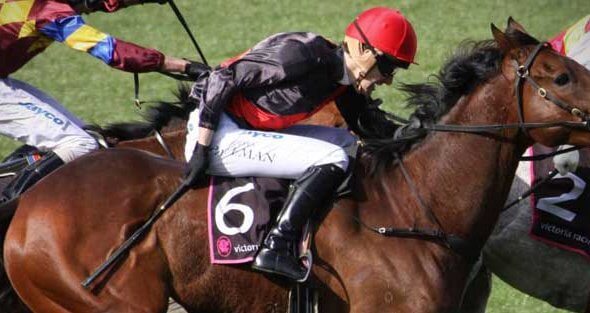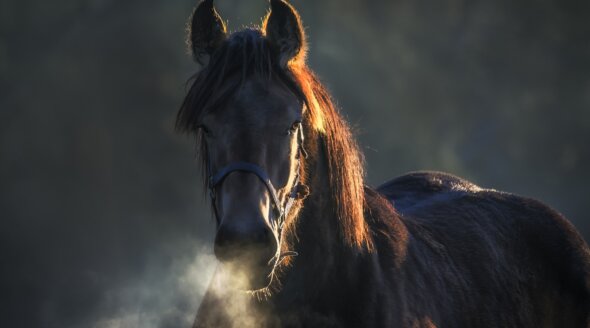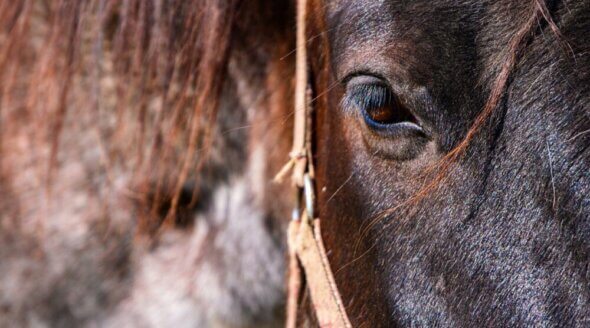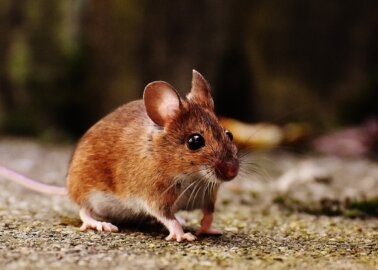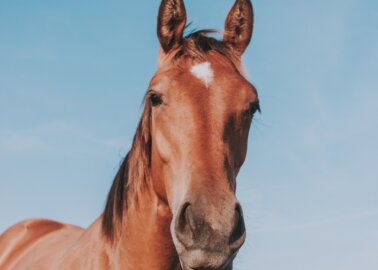Horse Racing’s Finish Line Is at the Abattoir
A new Animal Aid investigation has exposed the hidden dark side of the horse racing industry. It uncovered the fate of unwanted, injured, and retired horses discarded by trainers and owners when they’re no longer profitable.
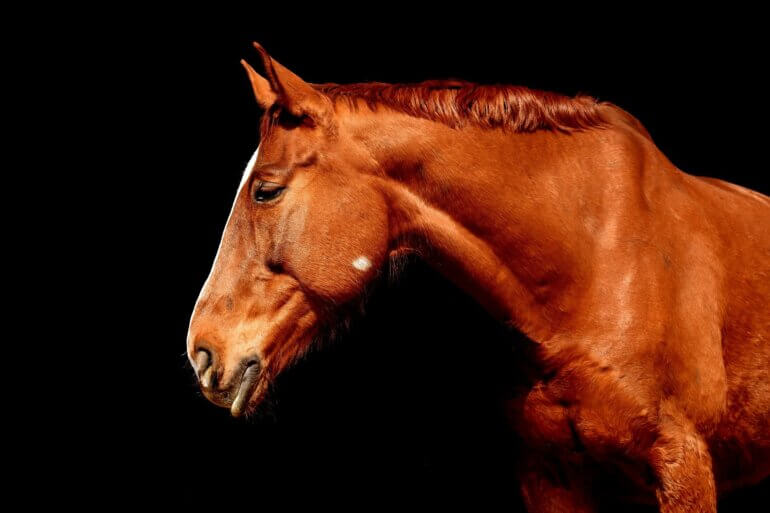
Animal Aid’s investigation found that more than 4,000 horses used for racing have been disposed of like used betting slips and sent to abattoirs since 2019. Their flesh was sold for human consumption, given to zoos or to a hunt to feed the hounds, or dumped.
The footage reveals that many of these horses were young Thoroughbreds who were disposed of by dealers. Because of the excessive number of foals bred for the racing industry, many young animals are simply not wanted and never race. They’re considered a waste product of the industry, and many are shipped to the UK for slaughter from Ireland on long and arduous journeys to their terrifying deaths.
Others might be past champions, like Vyta Du Roc, who won seven races, making almost £180,000 for his owners. Footage showing the end of his life at an abattoir was featured in the exposé. After everything the industry puts them through for racing, horses like Vyta are exploited for every penny and then mercilessly killed, often while fully conscious and in view of other horses, which is illegal in the UK.
Cruelty on and off the Track
During their “careers”, horses are forced to race for the sake of human entertainment. The tracks are often dangerous, leading to injury or death.
Twenty-nine horses have died as a result of racing at the Grand National meeting since 2010, and countless others have been injured. At Becher’s Brook, aptly nicknamed the “killer fence”, horses have slammed face-first into the ground and collided with each other, breaking necks, backs, and legs.
Horse Racing Often Ends at the Abattoir
The horse racing industry is just another supplier of the meat industry.
It’s not the first time the destiny of horses used for racing has been exposed. PETA US has documented the terrifying journey of horses discarded by the industry to slaughterhouses in Canada and, for the first time ever, uncovered that many horses used for racing are killed for their flesh inside South Korea’s largest horse abattoir.
A Korea Racing Authority official stated that of the 1,600 horses “retired” from the racing industry each year, only 50 (about 3%) are deemed suitable for other equestrian uses. The rest are slaughtered, and their flesh is sold in restaurants and supermarkets.
Every year, hundreds of Thoroughbreds from the US are sold to stables in Japan, where 90% of horses end up at the abattoir. A PETA US undercover investigation of Japan’s largest horse abattoir captured terrified horses panicking and trying to escape. These gentle beings are destined to be killed, cut apart, and sold as food for humans and dogs when they no longer make their trainers and owners money on the race track.
What You Can Do
As individuals, we can stop fuelling this cruelty by refusing to place bets on horse races.
The horse racing industry is self-regulated, which means there’s little accountability or traceability. Horses have few legal protections and often simply disappear. They are routinely killed without even being stunned or may have to watch in terror as others are being shot.
Unrestricted and unregulated breeding has led to an excess of unwanted horses, who are destined for the slaughterhouse. This needs to change.
Please sign a new government petition calling for the introduction of national limits on horse breeding:
We need to get to 100,000 signatures to trigger a debate in Parliament about regulating the cruel racing industry.
If you’re looking for more ways to help horses, please take these rapid actions:

